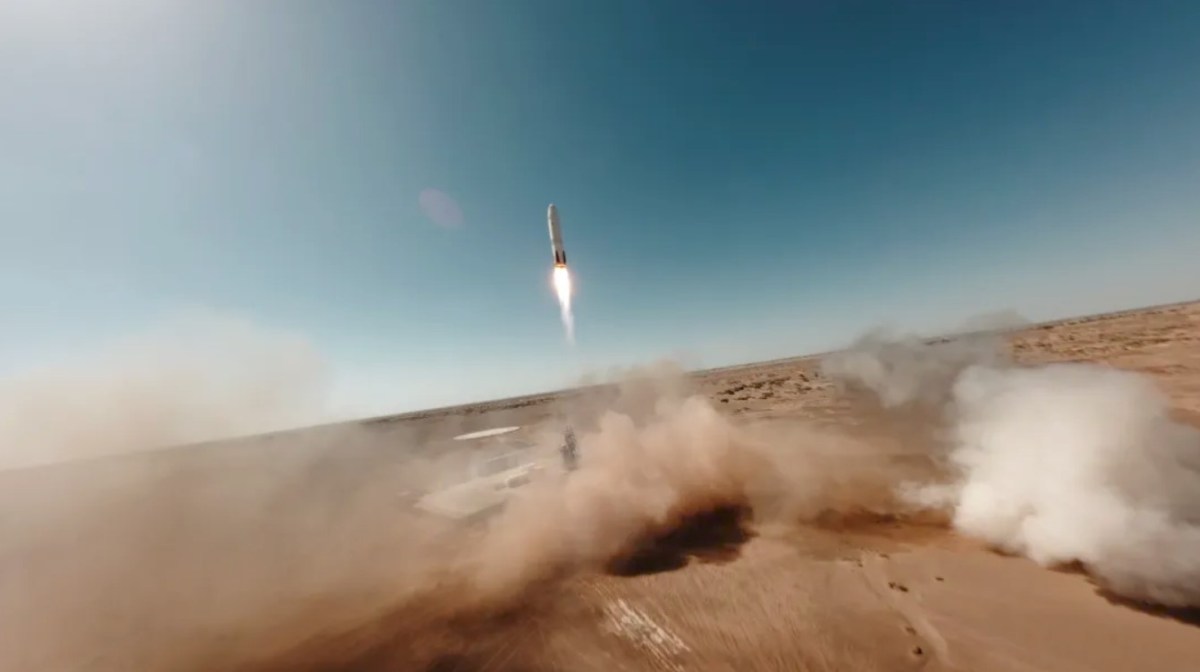HELSINKI — Chinese commercial rocket firm Deep Blue Aerospace conducted a first-stage rocket hop test Sunday, experiencing a partial failure during the final moments of landing.
Deep Blue Aerospace carried out the test at 1:40 a.m. Eastern (0540 UTC) Sept. 22 at the firm’s Ejin Banner Spaceport in Inner Mongolia using a Nebula-1 rocket first stage.
Footage of the vertical liftoff, vertical landing test shows the rocket ascending to a predetermined altitude before shutting off two of the three engines used for the 179-second flight.
Landing legs deployed as planned, and the stage hovered above its planned landing spot. However an anomaly during the final engine shutdown phase led to a higher-than-expected landing altitude, leading to partial damage.
Despite the failure, Deep Blue Aerospace emphasized the positives in a statement, claiming that its Nebula-1 stage successfully completed 10 out of 11 major verification tasks outlined for the flight. The landing accuracy was stated to be around 0.5 meters. It added that innovations in attitude control, trajectory optimization, and millimeter-precision guidance were successfully tested.
Notably, the test was the first high-altitude VTVL test in China using an orbital-class rocket stage. The company will now prepare for a new VTVL test scheduled for November.
The Nebula-1 uses nine Thunder-R kerosene-liquid oxygen engines on its first stage. Three engines were used in Sunday’s VTVL test flight. It was fueled to one-fifth of its capacity for the flight.
The company conducted a successful kilometer-level VTVL test in May 2022. This is the first time however that the Thunder-R engine, which will power orbital launches, was used.
The firm says the test is a step towards a subsequent 100-kilometer-level recovery flight test and orbital launch and recovery test mission.
Deep Blue Aerospace also underlined that the test was strictly carried out in accordance with the safety management requirements of rocket tests, and was conducted in an uninhabited area in the Gobi Desert. Chinese commercial launch firm Space Pioneer narrowly avoided disaster in June when its Tianlong-3 first stage dramatically took off during a static fire test near inhabited areas.
The orbital Nebula-1 is a two-stage, 3.35-meter-diameter rocket. It will be capable of carrying 2,000 kilograms to low Earth orbit (LEO) while an improved version will be able to lift 8,000 kilograms to LEO.
Deep Blue Aerospace is also working on a larger Nebula-2 rocket. That will be capable of sending 20,000 kilograms of payload to LEO.
The test follows recent successful VTVL tests from Chinese entities. Most recently commercial outfit Landspace conducted a 10-kilometer test with itS Zhuque-3, including an engine restart. State-owned SAST reached 12 kilometers in June.
The activity comes as China seeks reusable rocket capabilities and increased launch capacity. The country needs to greatly increase its launch rate to construct planned low Earth orbit megaconstellations, namely Gouwang and G60/Thousand Sails.
Deep Blue Aerospace secured strategic funding in August, following prior funding raised in May. China’s central government last year designated commercial space as an important future industry.
A number of large funding rounds for commercial space firms have followed in 2024. Strong local government support for commercial space in China has also followed the central government announcement.
